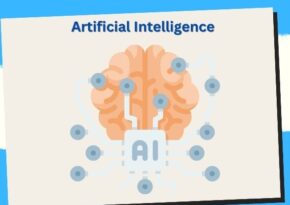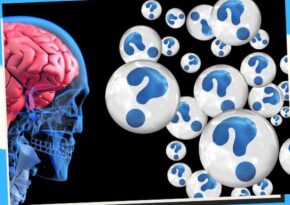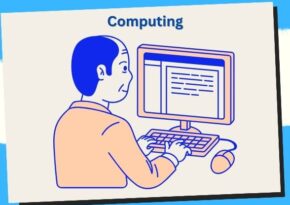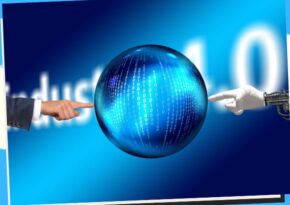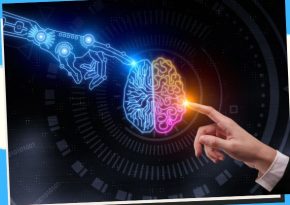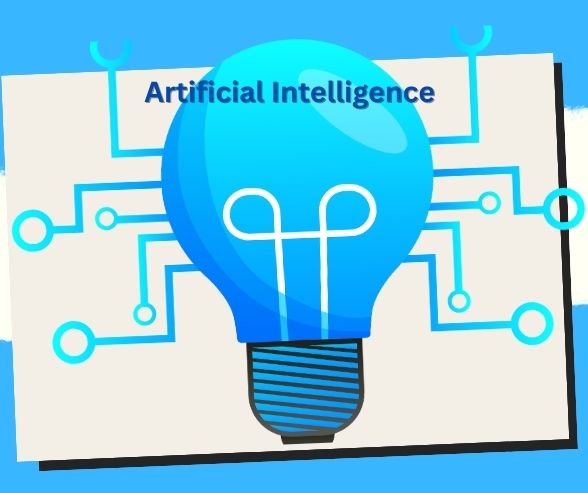
Beyond Supervision: Harnessing Unsupervised Learning for Clustering and Dimensionality Reduction
🔍 Liberating insights – dive deep into the world beyond supervision, where unsupervised learning liberates patterns and dimensions in data, enabling us to make sense of the seemingly chaotic.
Exploring the Uncharted: Unveiling Unsupervised Learning in AI and ML 🌌🧩
In the realm of technology, Artificial Intelligence (AI) and Machine Learning (ML) have transformed the way we approach problems and uncover insights. For aspiring and newbie IT professionals, delving into the realm of Unsupervised Learning isn’t just an exploration; it’s a voyage into the mysterious world of patterns, clusters, and dimensions. In this article, we’ll embark on a captivating journey, unraveling the intricacies of Unsupervised Learning, focusing on clustering and dimensionality reduction, and illuminating how these techniques reshape our understanding of data and its hidden treasures. 🚀💻
Navigating the Landscape of Unsupervised Learning 🗺️🔍
Unsupervised Learning stands in contrast to its supervised counterpart. While supervised learning involves labeled data for training, unsupervised learning operates in a realm without explicit labels. Instead, it seeks to find patterns, structures, and relationships within data on its own, paving the way for data-driven discoveries.
The Essence of Unsupervised Learning 🌠📊
Unsupervised Learning is driven by the desire to uncover hidden structures in data:
- Clustering: This involves grouping similar data points together, forming clusters that share common characteristics.
- Dimensionality Reduction: This technique aims to simplify complex data by reducing the number of dimensions while preserving essential information.
These techniques play a pivotal role in making sense of large, unstructured datasets, often revealing insights that might otherwise remain concealed.
Clustering: Unraveling Patterns in Data 🧩🔎
Clustering, a prominent aspect of Unsupervised Learning, involves partitioning a dataset into groups or clusters based on inherent similarities. Imagine being able to group customers by purchasing habits, or galaxies by their attributes. Clustering unlocks patterns that can lead to meaningful categorizations.
The Clustering Process 🏙️🧾
Clustering typically follows these steps:
- Data Preparation: Preprocess the data, ensuring it’s appropriately scaled and formatted for analysis.
- Choosing a Clustering Algorithm: Select an algorithm suited to your data and desired outcomes. Algorithms like K-Means and Hierarchical Clustering are popular choices.
- Determine the Number of Clusters: Decide how many clusters should be created. This can be based on domain knowledge or utilizing methods like the “Elbow Method.”
- Cluster Assignment: The algorithm assigns data points to clusters, often iteratively refining assignments to optimize cluster quality.
- Interpretation: Analyze the clusters to identify meaningful patterns and insights.
Real-World Applications of Clustering 🏬🌆
Clustering has wide-ranging applications across industries:
- Marketing: Clustering customers based on behavior for targeted marketing strategies.
- Biology: Identifying gene expression patterns to understand biological processes.
- Retail: Grouping products to optimize inventory management and store layout.
- Finance: Detecting fraudulent transactions by clustering anomalous behavior.
Clustering transforms raw data into actionable insights, empowering businesses and researchers to make informed decisions.
Dimensionality Reduction: Simplifying Complexity 🌀📈
In the age of big data, the curse of dimensionality—where datasets become overly complex—can hinder analysis. Dimensionality reduction is the solution, aiming to capture the essence of data in a lower-dimensional space without losing critical information.
The Dimensionality Reduction Process 🧭📊
Dimensionality reduction involves:
- Feature Selection: Choosing relevant features that contribute significantly to the data’s variance.
- Feature Extraction: Creating new features that capture essential information from the original data.
- Reducing Dimensions: Using techniques like Principal Component Analysis (PCA) or t-Distributed Stochastic Neighbor Embedding (t-SNE) to transform data into a lower-dimensional representation.
By reducing dimensions, you streamline computations, eliminate noise, and reveal intrinsic structures that might be obscured in high-dimensional space.
Real-Life Benefits of Dimensionality Reduction 🚀🌌
Dimensionality reduction finds its application in numerous domains:
- Image Compression: Reducing dimensions in images without significant loss of visual quality.
- Genomics: Analyzing complex genetic data by capturing essential variations.
- Recommendation Systems: Simplifying user-item interactions for better recommendations.
- Data Visualization: Projecting high-dimensional data onto a 2D or 3D space for visualization.
Dimensionality reduction enables efficient analysis and visualization of complex data, allowing insights to surface more effectively.
Embarking on Your Journey into Unsupervised Learning 🌱💡
For aspiring and newbie IT professionals, here are steps to set you on the path to mastering Unsupervised Learning:
1. Understanding the Basics:
Start by comprehending the difference between supervised and unsupervised learning, and grasp the fundamental concepts of clustering and dimensionality reduction.
2. Mastering the Algorithms:
Explore clustering algorithms like K-Means, Hierarchical Clustering, and dimensionality reduction techniques such as PCA and t-SNE. Understand their strengths and limitations.
3. Exploring Datasets:
Experiment with publicly available datasets to practice clustering and dimensionality reduction techniques.
4. Applying to Real Data:
Apply your skills to real-world data problems. Choose datasets relevant to your interests or industry.
5. Learn from the Community:
Engage with online courses, forums, and communities to learn from experienced practitioners and enthusiasts.
The Horizon of Unsupervised Learning: Infinite Possibilities 🚀🔭
Aspiring and newbie IT professionals who embark on the journey into Unsupervised Learning are entering a realm of limitless exploration. Clustering and dimensionality reduction are the tools that transform data into insights, patterns, and understanding. By delving into the mysteries of data without explicit labels, you’re contributing to a field that shapes industries, research, and decision-making. As the digital landscape continues to evolve, your understanding of Unsupervised Learning will illuminate the hidden dimensions of data, revealing insights that empower businesses, researchers, and innovators to navigate the uncharted territories of knowledge and discovery. 🌍🧩🌌
🤖 Benefits of Unsupervised Learning
1. Discover Hidden Patterns: Unsupervised learning algorithms uncover hidden patterns and structures within data, providing valuable insights that may not be apparent through manual analysis.
2. Scalability: These algorithms are highly scalable, and capable of handling large and complex datasets with ease, making them suitable for a wide range of applications across various industries.
3. Data Exploration: Unsupervised learning facilitates data exploration by automatically organizing and summarizing data, allowing analysts to gain a deeper understanding of underlying trends and relationships.
4. Anomaly Detection: Unsupervised learning algorithms can detect anomalies or outliers in data, flagging irregularities that may indicate fraudulent activity, equipment malfunction, or other unusual occurrences.
5. Feature Extraction: Dimensionality reduction techniques extract essential features from high-dimensional data, reducing computational complexity and improving model performance in subsequent tasks.
6. Market Segmentation: Clustering algorithms group similar data points together, enabling businesses to identify distinct market segments and tailor their marketing strategies accordingly.
7. Image and Text Analysis: Unsupervised learning algorithms are widely used in image and text analysis tasks, such as image clustering, topic modeling, and document clustering, for organizing and categorizing unstructured data.
8. Customer Segmentation: By clustering customers based on their purchasing behavior or preferences, businesses can create targeted marketing campaigns and personalized recommendations, enhancing customer satisfaction and loyalty.
9. Dimensionality Reduction: Dimensionality reduction techniques simplify complex datasets by projecting them onto lower-dimensional spaces while preserving essential information, aiding in visualization and interpretation.
10. Improved Decision Making: Insights gained from unsupervised learning algorithms empower organizations to make informed decisions, optimize processes, and drive innovation, leading to improved business outcomes and competitive advantage.
Real-Life Cases: Illustrative Examples of Unsupervised Learning
1. Market Basket Analysis: Retailers use unsupervised learning techniques like association rule mining to analyze customer purchase patterns and identify frequently co-purchased items, enabling targeted cross-selling and upselling strategies.
2. Document Clustering: News organizations employ clustering algorithms to group similar articles or documents based on their content, facilitating content organization, recommendation systems, and topic discovery.
3. Fraud Detection: Financial institutions utilize unsupervised learning algorithms to detect unusual patterns or anomalies in transaction data, flagging potentially fraudulent activities for further investigation and prevention.
4. Image Segmentation: Medical researchers leverage unsupervised learning techniques like k-means clustering for image segmentation tasks, assisting in the identification and analysis of specific regions of interest in medical images.
5. Recommendation Systems: E-commerce platforms employ collaborative filtering algorithms to recommend products to users based on their past purchase history or browsing behavior, enhancing the user experience and driving sales.
6. Social Network Analysis: Unsupervised learning algorithms analyze social network data to identify communities or clusters of users with similar interests or connections, enabling targeted marketing and content delivery.
7. Customer Churn Prediction: Telecom companies use unsupervised learning techniques to segment customers based on their usage patterns and demographics, predicting customer churn and implementing retention strategies accordingly.
8. Market Research: Marketing agencies employ clustering algorithms to segment target markets based on demographic, psychographic, or behavioral attributes, guiding product development, pricing, and promotional strategies.
9. DNA Sequencing: Biologists utilize unsupervised learning techniques for clustering DNA sequences based on similarities in genetic code, aiding in evolutionary analysis, disease diagnosis, and drug discovery.
10. Network Anomaly Detection: Cybersecurity analysts deploy unsupervised learning algorithms to detect anomalous behavior in network traffic, identifying potential security threats and vulnerabilities before they can be exploited.
Key Takeaways from Unsupervised Learning
1. Data Preprocessing: Proper data preprocessing, including normalization, feature scaling, and handling missing values, is essential for effective unsupervised learning.
2. Algorithm Selection: Choose the appropriate unsupervised learning algorithm based on the nature of your data and the specific task at hand, considering factors such as scalability, interpretability, and computational efficiency.
3. Hyperparameter Tuning: Experiment with different hyperparameters and model configurations to optimize the performance of unsupervised learning algorithms, using techniques like grid search and cross-validation for parameter selection.
4. Interpretability vs. Performance: Balance model interpretability with performance metrics, considering the trade-offs between model complexity, explainability, and predictive accuracy in unsupervised learning tasks.
5. Evaluation Metrics: Use appropriate evaluation metrics, such as silhouette score, Davies-Bouldin index, or inertia, to assess the quality of clustering or dimensionality reduction results and compare different models objectively.
6. Visualization Techniques: Utilize visualization techniques like scatter plots, dendrograms, and heatmaps to explore and interpret unsupervised learning results visually, gaining insights into data structures and relationships.
7. Ensemble Methods: Consider using ensemble methods, such as hierarchical clustering ensembles or model averaging, to improve the robustness and stability of unsupervised learning models, especially in noisy or heterogeneous datasets.
8. Feature Engineering: Feature engineering plays a crucial role in dimensionality reduction tasks, where selecting informative and discriminative features can enhance the performance of unsupervised learning algorithms.
9. Domain Knowledge Integration: Incorporate domain knowledge and domain-specific constraints into unsupervised learning models to improve their interpretability and relevance to real-world applications.
10. Continuous Learning: Unsupervised learning is an iterative process, requiring continuous refinement and adaptation to evolving data distributions, user feedback, and domain dynamics for optimal performance and relevance.
Frequently Asked Questions (FAQs) about Unsupervised Learning
1. What is unsupervised learning, and how does it differ from supervised learning?
Unsupervised learning is a type of machine learning where algorithms learn to identify patterns or structures in unlabeled data, without explicit guidance or supervision. In contrast, supervised learning involves learning from labeled data to make predictions or decisions.
2. What are some common applications of unsupervised learning?
Common applications of unsupervised learning include clustering, dimensionality reduction, anomaly detection, and pattern discovery in diverse domains such as finance, healthcare, marketing, and cybersecurity.
3. How do clustering algorithms work, and what are some popular clustering techniques?
Clustering algorithms group similar data points together based on their features or attributes, aiming to maximize intra-cluster similarity and minimize inter-cluster dissimilarity. Popular clustering techniques include k-means clustering, hierarchical clustering, and DBSCAN.
4. What is dimensionality reduction, and why is it important in machine learning?
Dimensionality reduction techniques aim to reduce the number of input features or variables in a dataset while preserving as much relevant information as possible. This is important for simplifying complex datasets, improving computational efficiency, and mitigating the curse of dimensionality in machine learning tasks.
5. How do unsupervised learning algorithms handle unlabeled data?
Unsupervised learning algorithms explore the inherent structure of
unlabeled data by identifying patterns, similarities, or clusters without relying on explicit labels or supervision. They learn from the underlying distribution of the data to make inferences or extract meaningful representations.
6. What are some challenges associated with unsupervised learning?
Challenges in unsupervised learning include the lack of ground truth labels for evaluating model performance, the presence of noisy or ambiguous data, the curse of dimensionality in high-dimensional spaces, and the interpretability of complex models.
7. Can unsupervised learning algorithms be combined with supervised learning techniques?
Yes, unsupervised learning techniques can be used in conjunction with supervised learning methods for tasks such as feature extraction, data preprocessing, or semi-supervised learning, where labeled and unlabeled data are available simultaneously.
8. How do you evaluate the performance of unsupervised learning models?
Performance evaluation metrics for unsupervised learning models vary depending on the specific task and algorithm used. Common evaluation metrics include silhouette score, Davies-Bouldin index, inertia, purity, and clustering accuracy.
9. What are some ethical considerations in unsupervised learning?
Ethical considerations in unsupervised learning include privacy protection, fairness, transparency, and accountability in data collection, model development, and decision-making processes, to mitigate potential biases and societal impacts.
10. How can businesses leverage unsupervised learning for competitive advantage?
Businesses can leverage unsupervised learning for customer segmentation, market analysis, anomaly detection, recommendation systems, predictive modeling, and other data-driven applications to gain insights, optimize processes, and drive innovation in their respective industries.
Conclusion
Unsupervised learning offers powerful tools for exploring and understanding complex data structures, uncovering hidden patterns, and extracting valuable insights without the need for labeled training data. By mastering clustering and dimensionality reduction techniques, and embracing ethical considerations and best practices, individuals and organizations can harness the full potential of unsupervised learning to drive innovation, make informed decisions, and stay ahead in today’s data-driven world. So, venture beyond supervision and unlock the transformative capabilities of unsupervised learning for clustering and dimensionality reduction! 🤖📊
Key Phrases
- Unsupervised learning techniques
- Clustering and dimensionality reduction
- Data analysis strategies
- Advanced data science methods
- Unsupervised learning algorithms
- Data clustering optimization
- Dimensionality reduction approaches
- Data structure exploration
- Pattern recognition algorithms
- Machine learning applications
Best Hashtags
- #UnsupervisedLearning
- #DataAnalysis
- #Clustering
- #DimensionalityReduction
- #AdvancedAnalytics
- #DataScience
- #MachineLearning
- #PatternRecognition
- #DataInsights
- #TechInnovation
Save/Share this story with QR CODE
Disclaimer
This article is for informational purposes only and does not constitute endorsement of any specific technologies or methodologies and financial advice or endorsement of any specific products or services.
📩 Need to get in touch?
Feel free to Email Us for comments, suggestions, reviews, or anything else.
We appreciate your reading. 😊Simple Ways To Say Thanks & Support Us:
1.) ❤️GIVE A TIP. Send a small donation thru Paypal😊❤️
Your DONATION will be used to fund and maintain NEXTGENDAY.com
Subscribers in the Philippines can make donations to mobile number 0917 906 3081, thru GCash.
3.) 🛒 BUY or SIGN UP to our AFFILIATE PARTNERS.
4.) 👍 Give this news article a THUMBS UP, and Leave a Comment (at Least Five Words).
AFFILIATE PARTNERS

World Class Nutritional Supplements - Buy Highest Quality Products, Purest Most Healthy Ingredients, Direct to your Door! Up to 90% OFF.
Join LiveGood Today - A company created to satisfy the world's most demanding leaders and entrepreneurs, with the best compensation plan today.



 Business Technology, Finance Technology & Information Technology
Business Technology, Finance Technology & Information Technology
